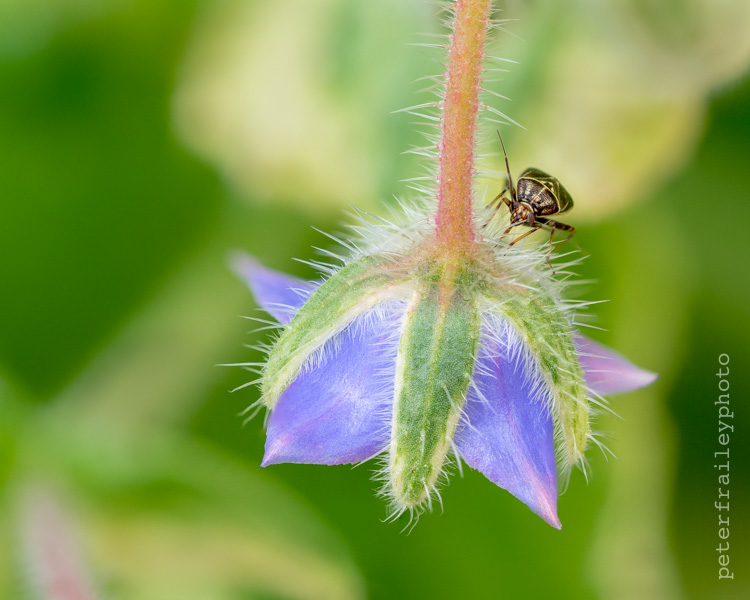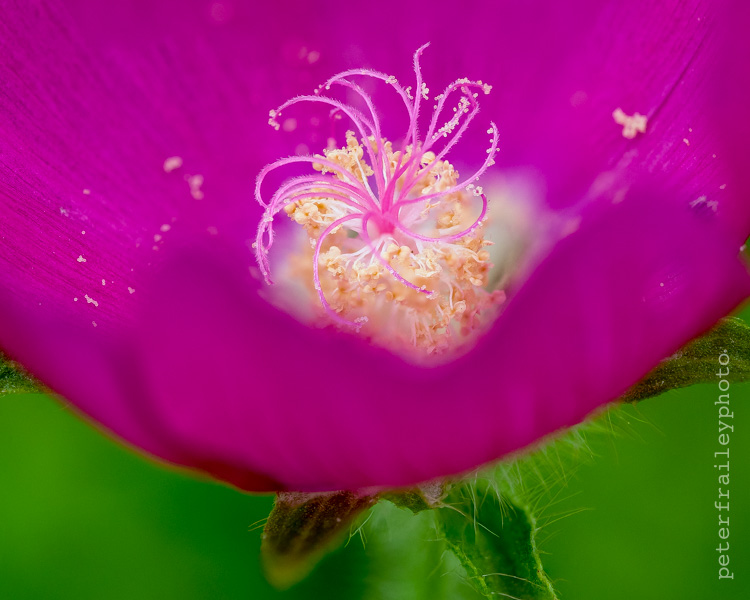I decided to visit our local botanic garden for a few hours last weekend. The sky was a bit hazy which makes for nice diffused light (though it did unfortunately clear up somewhat once I got there), and the wind was light. The air temperature was delightfully in the 70s and the humidity was not quite at the “uncomfortable” level. It was quite an enjoyable visit, with lots of happy people walking around, including many kids on what seemed to be a scavenger hunt.
We’ve had a lot of heat this summer and recently some very heavy rain. The result of this is that the flowers during this visit generally looked a little beaten up. But I was able to shift gears to the insect life. I’m not a huge fan of getting close to bees, but with my 12-100mm Olympus lens (24-200mm equivalent) I felt I could shoot from a safe distance. Plus I think the bees were a lot more interested in the flowers than in me! The long zoom also helped with the butterfly photo. Had I brought two cameras I would have put my Olympus 60mm macro on the second camera, as I would have liked to have been closer to the spider.
It was not until I got back home and viewed my 300+ images, and found a mere 9 that I thought were “good”, that I began comparing my outing at the botanic garden with fly fishing.
Think of the 300 shutter actuations I made, as I walked among the flowers, as similar to perhaps 300 casts with my fly rod, as I walked up and down the river. Then think of the 300 captures (i.e. photos) as similar to a pile of caught fish, or at least bites or nibbles. (Actually, 300 fish - one on every cast - is unlikely). The 9 good images are like 9 good-sized fish, the other 294 fish being thrown back into the river, and the other 294 images being deleted. What you see in this blog post are those 9 photos.
There are plenty of other similarities. Both activities provide recreation by offering an opportunity to get outdoors and to be in nature. The camera is similar to the fly rod and reel… all being nice pieces of modern technology, designed to capture the subject of your adventure. The camera backpack with assorted lenses and accessories is like the fly fishing vest full of flies and accessories. Perhaps, too, the art of post processing one’s images can be compared to the art of tying one’s own flies.
Enough said about fly fishing.
The image below is my favorite image of the set. It is the crab spider I mentioned above. Using my fishing analogy, this would be the biggest trout of the outing. What I like so much about this photo is the nature story. And actually, I saw this capture happen.
I was looking down on the flower and saw the fly about to land. I heard a snap as the "claws" of the spider snapped shut on the fly. As far as I can tell there are no webs for the crab spider to catch his prey. Instead he patiently awaits for a fly to come within his range. The two most-forward legs on each side are held wide open like a crab with claws. Each pair of legs appear to be glued together, making it look like there are only two claws, one on each side. (Though the spider is no longer "in wait", you can see that his left forward two legs are held together.) These legs/claws snapped shut as fast as one of those spring-loaded mouse traps, and instantaneously pulled the fly into the spider's mouth.














































